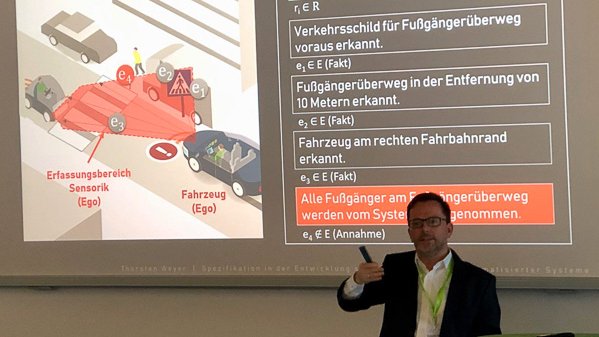Yesterday, Dr. Thorsten Weyer gave the opening lecture at the conference "Modern Software Engineering on Embedded Devices" of the Swiss Information Technology Society (ITG) and the Swiss Informatics Society (SI). He showed how to deal with the specifications of highly automated systems in order to implement them systematically.
Whether we are talking about autonomous vehicles, Industry 4.0, Smart Energy or Smart City - the core of the digital transformation are self-learning, highly automated systems. But what distinguishes these systems from "conventional" software systems?
Essentially, there are three capabilities facilitating the technologies of our digital future:
1. They can independently adapt to changing conditions in their environment.
2. They can learn from examples in order to advance independently.
3. They can collaborate with other systems to achieve an overall goal.
These requirements result in new challenges for development. In his presentation, Dr. Weyer looked at some of these challenges from the perspective of specification. In addition, he presented solution approaches that can be used as part of a methodology for the development of self-learning, highly automated systems.
